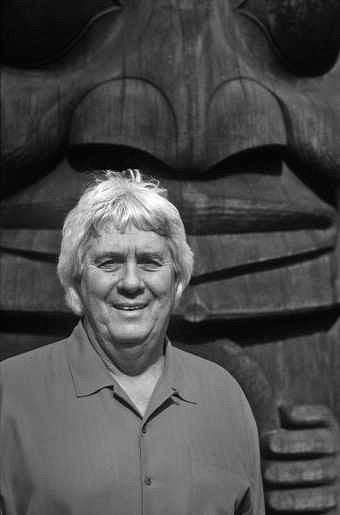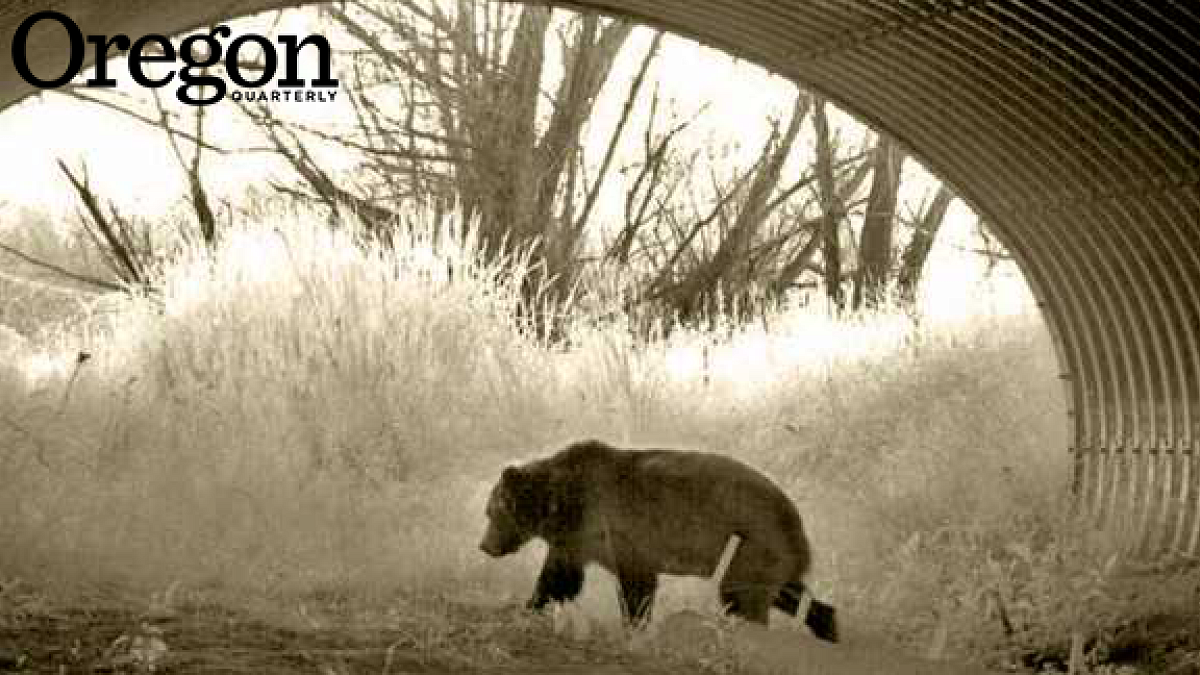In western Montana, a grizzly bear can walk under a highway thanks to the work of an architectural firm based 500 miles away. The project, known by the unromantic name "U.S. Highway 93 through the Flathead Indian Reservation," reconstructed 56 miles of road through the vast reservation. To better protect fauna sacred to the Flathead tribe, Highway 93 now has the most wildlife crossings in the country for that length of road—46 in all, with plenty of space for a roaming grizzly bear.
"U.S. Highway 93" is just one project out of the hundreds the firm Jones & Jones has completed since opening its doors in 1969, but it showcases much of what the company and founding partner Johnpaul Jones '67 (not related to cofounders Ilze Jones and Grant Jones) hold dear: attention to detail, respect for culture, observance of tradition.

The directive "comes from my Native American heritage," explains Jones, who is of Choctaw and Cherokee descent. "My mother and grandmother pounded that into me: Do something good that relates to the natural world, the animal world, the human world, and the spirit world."
"Do something good" was also the message Jones offered the UO's graduating class of 2010 when he served as commencement day speaker. In his six-minute talk, Jones stressed it four times, emphasizing the simple but profound words and leaving a memorable impression amid the pomp and circumstance of the ceremony.
Jones's own career path began with some unexpected turns. After graduating from junior college, he accepted an entry-level job with an architecture firm in San Francisco. Seeing promise in their budding protégé, his bosses wanted him to look into the highly acclaimed architecture program at the UO and bought him a round-trip ticket to Oregon. A transplant to the West Coast, Jones had never been north of San Francisco and didn't even know about Eugene.
Arriving at the Eugene airport with no idea of what to expect, he caught a ride to campus. He spent the next several hours exploring the university, marveling especially at how the UO connected the schools of architecture and art—both physically and academically.
"I thought, 'Boy, this is a great place because they're together in the same facility,'" says Jones. "That's what really attracted me to the school . . . that kind of joint academic [study between] the arts and architecture."
During his stroll, the young Jones also stepped in on an upper-level architectural design class. "I just sat there and listened to what they had to say, and I thought, 'I really like this very much,'" he recalls.
Next stop: the admissions office.
Five years later and diploma in hand, Jones moved to Seattle, joining Jones & Jones as a founding principal. He wanted to accomplish the goal he'd so often heard repeated by his UO professors: "They were always talking about how architects have to get out of the ivory tower and get out into the real world."
In the four decades since, Jones has applied his talent to a list of projects as varied as they are impressive. At the top of that list is the Smithsonian's National Museum of the American Indian. Jones spent 12 years helping design the 400,000-square-foot, $220 million project. The day the museum opened in 2004, he and his family walked across the National Mall with members of more than 400 Indian nations, a significant honor for Jones, who was one of perhaps only 100 Native American architects in the entire country.
Adept at applying his skills to vastly different sorts of projects, Jones helped redefine the field of zoo design. In 1976, Jones & Jones designed the reconstruction of Seattle's Woodland Zoo; the overhaul of the gorilla, waterfowl, and African savanna exhibits so perfectly blended manmade design with the animals' natural environments that the project earned the prestigious President's Award of Excellence from the American Society of Landscape Architects. Jones went on to do major design work at the San Diego Zoo.
Jones also masterminded the UO's Many Nations Longhouse. The 2002 project was, he felt, an encouraging sign that attitudes toward Native American culture were changing. When he was a student, Jones says, traditional native architecture wasn't discussed in class, let alone celebrated on campus.
"It was the times," he remarks. His history of architecture professor "talked about colonial architecture and then he jumped to the Chicago School" and the rise of the modern American skyline.
Unfortunately, such lack of cross-cultural understanding wasn't new to Jones. Raised by a Native American mother and a white father in a small town in Oklahoma, Jones encountered his share of prejudice.
"Okmulgee, Oklahoma, was not a good place for Native Americans during those years," he says. One time, Jones recalls, the local police asked his father to take his Indian wife and kids out of town. "We did [leave], but I have never forgotten," he says of the incident.
Now 72, Jones has come a long way from such treatment, and has been honored many times for his accomplishments. In addition to serving as the UO commencement speaker, Jones was the first recipient of the Ellis F. Lawrence Medal for being an outstanding UO architecture graduate (1998). The department further recognized his work in 2011 with the Pietro Belluschi Distinguished Visiting Professorship.
In that role, Jones strove to push the students in his Indigenous Design course outside of their comfort zones, just as his teachers had pushed him during his time at the university. He organized a field trip to one of the Northwest's most iconic native structures, the Grand Ronde longhouse west of Salem.
Jones remembers the students on that outing tentatively entering through the building's low, round opening. It was difficult to see inside, he recalls, as the room was smoky from a fire blazing in the corner. The visitors settled, sitting in a circle while their hosts' ethereal songs of welcome washed over them. The flickering light, the smoke, the songs, the hospitality—the atmosphere was singular and powerful, conveying both the past and present through the building itself as much as through the people who inhabited it, the singers of the songs that day as well as those who sang for untold generations before. It was a different world from a campus classroom, about as far from the ivory tower as they could get.
Jones wanted his students to see how a physical structure shapes the experiences that happen within. He wanted them to leave with a sense of "what architecture does and how it helps convey the spirit of the place and the stories." Or, at the very least, leave inspired to do something good.
—By Elisabeth Kramer '12


